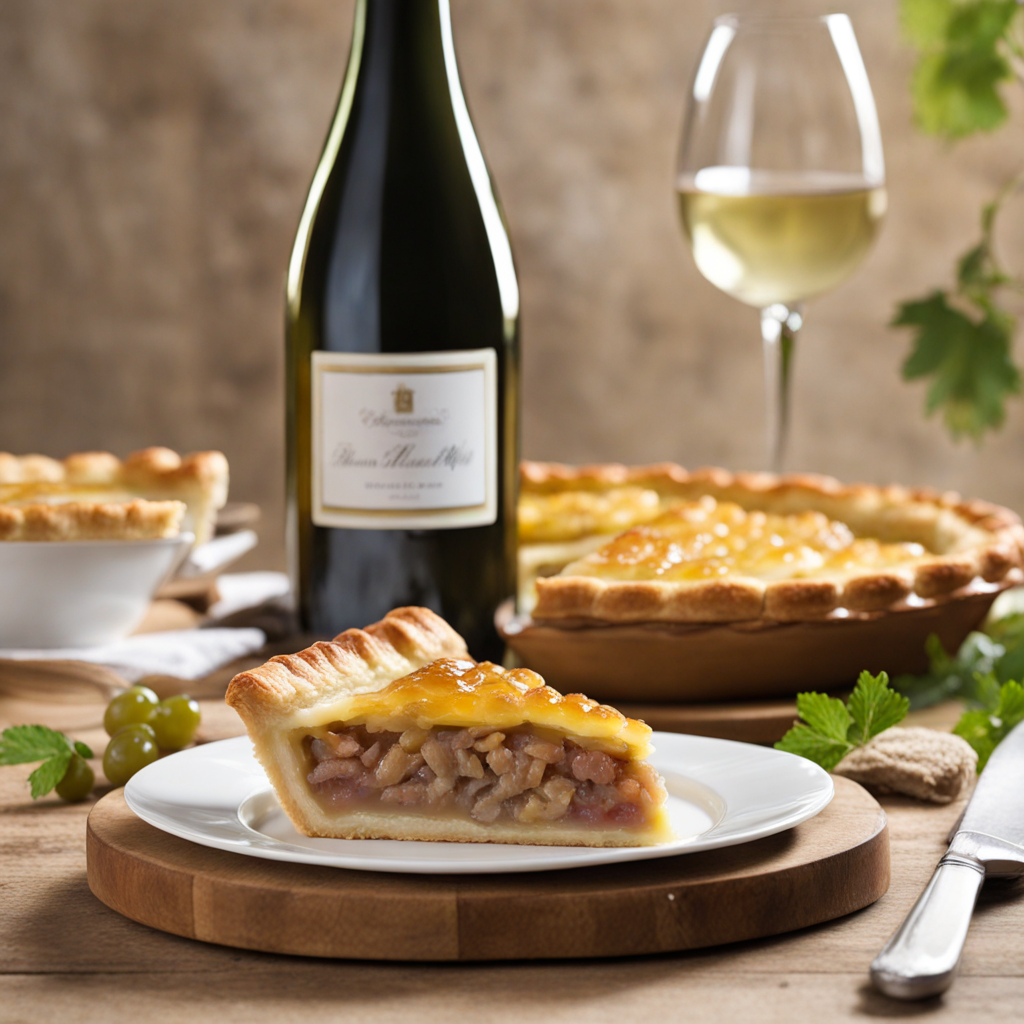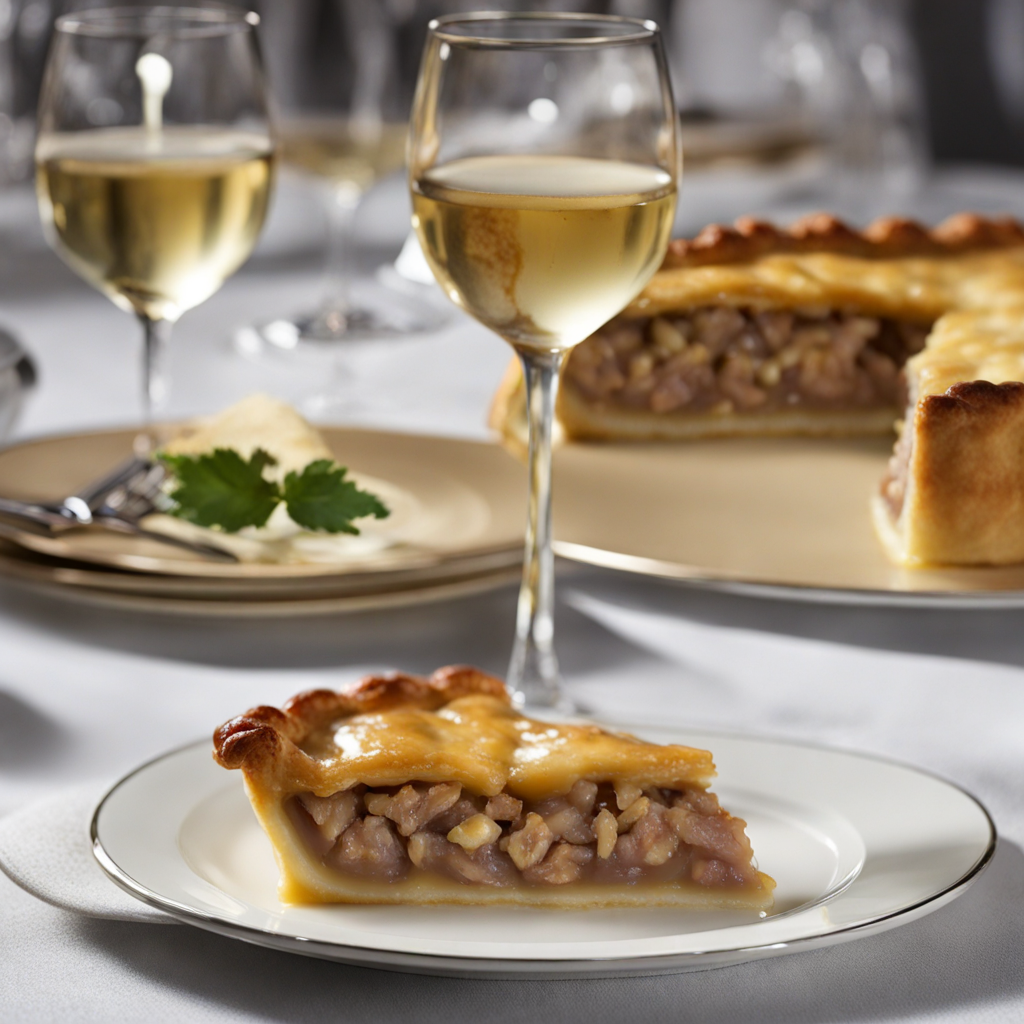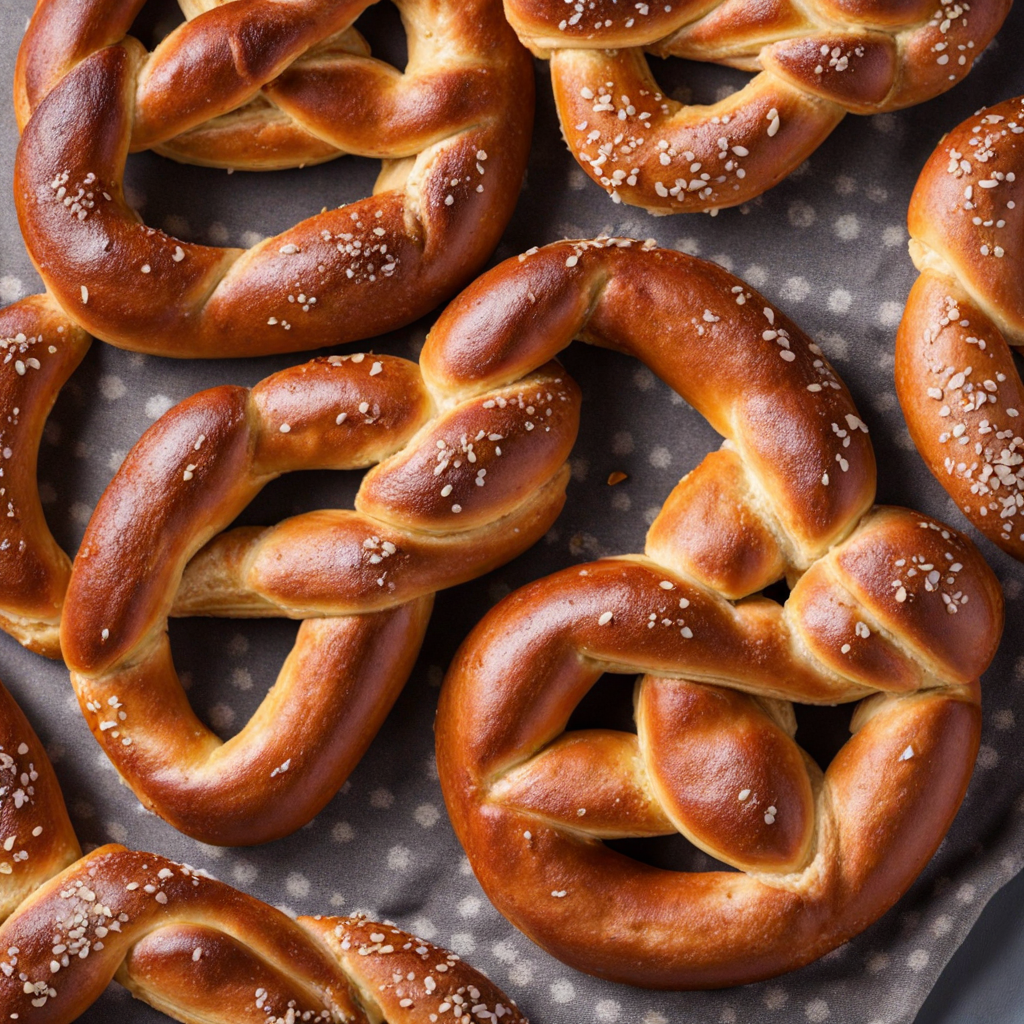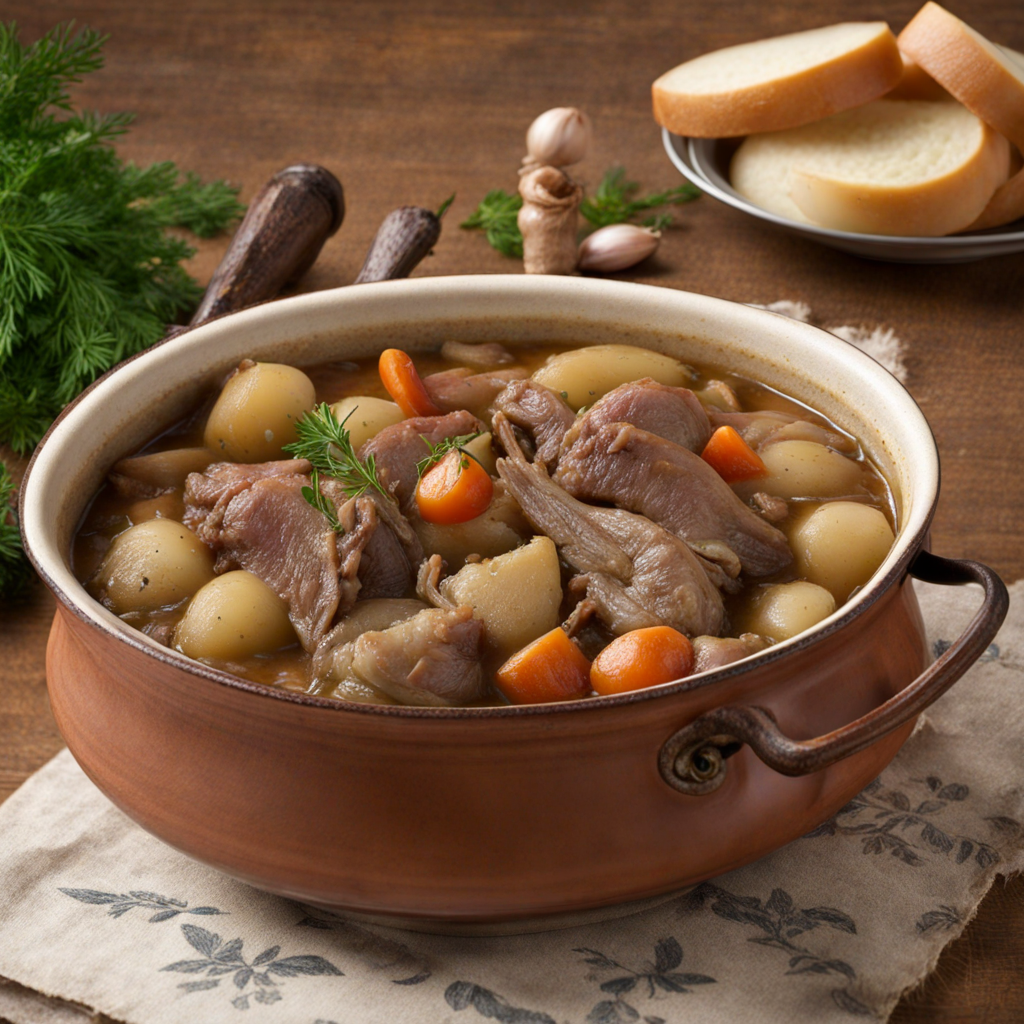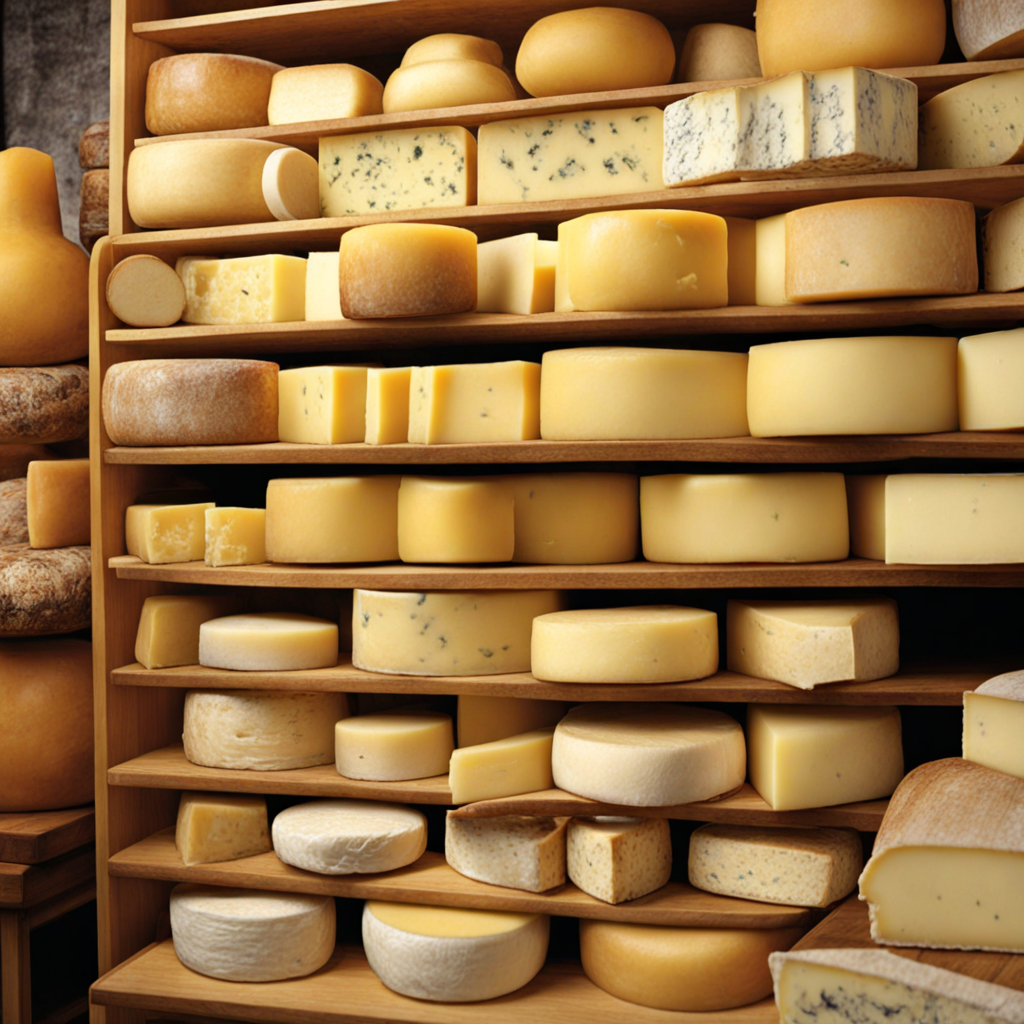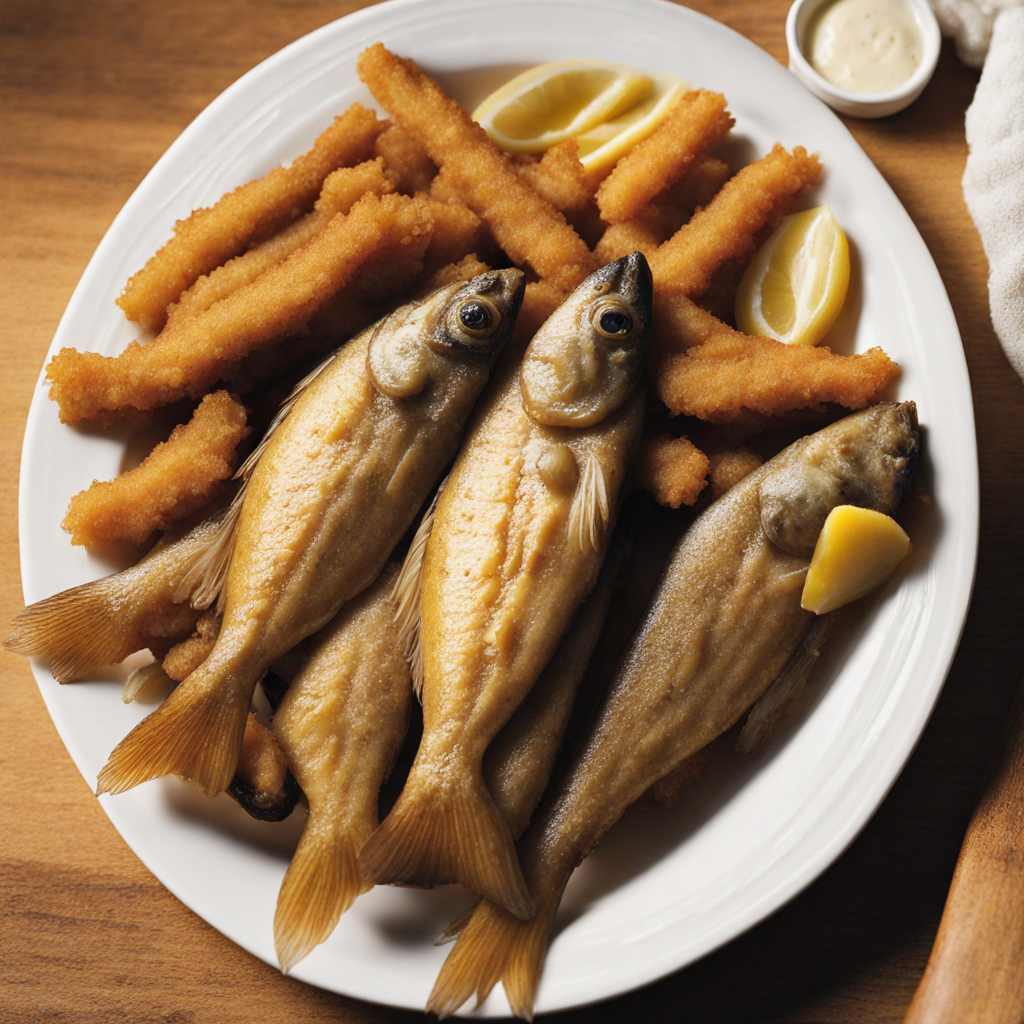Rieslingspaschtéit
Rieslingspaschtéit is a traditional Luxembourgish dish that beautifully marries the rich flavors of pâté with the vibrant notes of Riesling wine, a varietal that the region is famous for. This savory pastry is typically made with a flaky, buttery crust that envelops a luscious filling of finely minced meat, often a combination of pork and veal, blended with aromatic herbs and spices. The addition of Riesling wine not only enhances the flavor profile but also adds a subtle acidity that balances the richness of the meat, creating a harmonious taste experience. When prepared, Rieslingspaschtéit is baked until golden brown, resulting in a delightful contrast between the crispy exterior and the moist, flavorful filling within. It is often served warm, making it an inviting dish for gatherings or as a comforting meal at home. The pâté can be enjoyed on its own or accompanied by a side of pickles, fresh salad, or crusty bread, allowing for a customizable dining experience that highlights its versatility. This dish is not just a culinary delight but also a reflection of Luxembourg's gastronomic heritage. Rieslingspaschtéit is often enjoyed during festive occasions, family gatherings, or as part of a traditional Luxembourgish buffet. The marriage of local ingredients and the fine Riesling wine truly encapsulates the essence of Luxembourg's regional cuisine, offering a new taste adventure for those eager to explore the flavors of this charming European country.
How It Became This Dish
Rieslingspaschtéit: A Culinary Journey through Luxembourg's Gastronomic Heritage Rieslingspaschtéit, a delightful culinary creation from Luxembourg, is a pastry that encapsulates the rich history, culture, and flavors of the Grand Duchy. This dish, a savory pie filled with a mixture of rice, meat, and, most notably, Riesling wine, exemplifies how Luxembourgers have woven their unique gastronomic identity into the larger tapestry of European cuisine. Origins of Rieslingspaschtéit The origins of Rieslingspaschtéit can be traced back to the 19th century, a period marked by significant social and economic changes in Luxembourg. As the country navigated its post-revolutionary landscape, the culinary arts began to flourish. The influence of neighboring countries—especially France and Germany—was palpable, as Luxembourg is nestled between these two culinary giants. Traditionally, Luxembourgers utilized locally sourced ingredients, which is a hallmark of their cuisine. The use of Riesling wine, a grape variety that thrives in the Moselle Valley, is particularly significant. This area, known for its vineyards, has produced some of the finest Riesling wines in the world. The fermentation of grapes cultivated in this region has been a part of Luxembourg's agricultural identity for centuries, and the introduction of wine into savory dishes reflects a broader European trend of incorporating local wines into cooking practices. Cultural Significance Rieslingspaschtéit transcends mere sustenance; it embodies the spirit of Luxembourg's culinary heritage. The dish is often served during festive occasions, family gatherings, and celebrations, making it a beloved staple in Luxembourgish households. Its preparation is a communal affair, with families often coming together to create the pastry from scratch, reinforcing bonds and traditions that have been passed down through generations. In a broader context, Rieslingspaschtéit reflects Luxembourg's cultural identity—one that is characterized by a blend of influences from its neighboring countries while maintaining a distinct national flavor. It serves as a reminder of the country’s agricultural roots and the importance of local produce. The dish is often accompanied by side dishes made from seasonal vegetables, further showcasing Luxembourg's commitment to fresh, local ingredients. Development Over Time As Luxembourg evolved throughout the 20th century, so too did the culinary landscape. Post-World War II, the country experienced a surge in economic growth, which brought about new influences and innovations in the kitchen. The rise of gastronomy as a cultural phenomenon in Europe also allowed the Rieslingspaschtéit to gain recognition beyond Luxembourg’s borders. In the late 20th century, as food tourism began to rise, Luxembourg's culinary offerings, including Rieslingspaschtéit, garnered attention from international travelers. Chefs began to experiment with traditional recipes, incorporating modern techniques and international flavors while respecting the original essence of the dish. This evolution has led to a renaissance of traditional Luxembourgish cuisine, with Rieslingspaschtéit at the forefront. The Recipe: Tradition Meets Innovation The traditional recipe for Rieslingspaschtéit is relatively straightforward yet allows for variations that reflect personal and regional preferences. The base consists of a flaky pastry filled with a mixture of rice, minced meat (often pork or beef), and, crucially, Riesling wine. The inclusion of Riesling not only imparts a distinctive flavor but also adds a touch of acidity that balances the richness of the meat and the creaminess of the filling. In contemporary kitchens, chefs may incorporate elements such as herbs, spices, and even seasonal vegetables to enhance the flavor profile. Some modern interpretations have introduced variations that cater to different dietary preferences, such as vegetarian or gluten-free options, while still honoring the essence of the dish. Community and Festivals Rieslingspaschtéit is more than just a dish; it is a symbol of community and celebration. Throughout Luxembourg, various food festivals and markets showcase traditional culinary delights, with Rieslingspaschtéit often taking center stage. Events such as the "Fête de la Gastronomie" celebrate local dishes and promote culinary tourism, drawing attention to the rich flavors of Luxembourg. During these gatherings, chefs and home cooks alike share their variations of Rieslingspaschtéit, sparking conversations about family traditions, regional specialties, and culinary techniques. These events foster a sense of pride in the nation’s culinary heritage and encourage younger generations to appreciate and carry on these traditions. Conclusion Rieslingspaschtéit stands as a testament to Luxembourg's unique culinary heritage, reflecting a rich history shaped by local ingredients, cultural influences, and communal traditions. Its evolution from a traditional dish to a celebrated component of Luxembourg’s gastronomic identity showcases how food can transcend generations, fostering a sense of belonging and pride among its people. As Luxembourg continues to embrace its culinary roots while welcoming modern influences, Rieslingspaschtéit will undoubtedly remain a cherished symbol of the Grand Duchy’s diverse and vibrant food culture. Whether enjoyed at a family gathering, a festive celebration, or in a modern restaurant, this delightful pastry ensures that the flavors of Luxembourg will be savored for generations to come.
You may like
Discover local flavors from Luxembourg


